- How to make fish sauce dipping sauce is also commendable
- Meaning of the number 520, discover all the secrets of the number 520
- Top 5 ways to gain weight with eggs for skinny people
Punctuation is an important part of sentences and speech in all languages. If we use the wrong function of punctuation, it will lead to the wrong meaning of the whole sentence.
What are punctuation marks in English?
Punctuation: Just like in Vietnamese, punctuation marks in English are also used to end sentences, to shorten sentences, to express feelings, emotions, etc., but the correct use of punctuation marks In English, not many people pay attention to learn because everyone thinks that their usage is the same as in Vietnamese, but there are still differences between them.
Using the wrong punctuation not only makes you lose points when writing English essays or emails, but sometimes also makes the other person misunderstand the meaning of what you want to convey.
How to read accents in English
Before coming to the effect and usage of each type of mark in English, we will learn about English vocabulary about punctuation marks and their reading and transcription so that we can take the initiative in each conversation. and avoid misunderstanding of meaning.
Some common punctuation marks in English are read and transcribed as follows:
- Comma – comma – /ˈkɒmə/
- Dot – dot – /dɒt/ or full stop /ˌfʊl ˈstɒp/
- Colon – colon – /ˈkəʊlən/
- Semicolon – semi colon – /ˌsemiˈkəʊlən/
- Exclamation mark – exclamation mark – /ˌekskləˈmeɪʃn mɑːk/
- Question mark – /ˈkwestʃən mɑːk/
- Hyphen – hyphen – /ˈhaɪfn/
- single quotation mark – /ˈsɪŋɡl kwəʊˈteɪʃn mɑːks/
- double quotation marks – /ˈdʌbl kwəʊˈteɪʃn mɑːks/
How to read accents in English is not difficult, but to use it correctly and delicately, not everyone can do it.
How to use punctuation marks in English
1. Dot – Dot or Full stop – “.”
Of all the punctuation marks in English, the period is considered the most common and indispensable punctuation mark in English grammar. They are placed at the end of a line to end a complete sentence with enough subject and predicate.
In English, the period is used in the following cases:
- Use a period at the end of a sentence
Example: I am going to go to the museum tomorrow. (I'm going to the museum tomorrow.)
- Use periods after names of people, places, companies, abbreviated proper names in American English
Example: Mr.Frank. (Mr. Frank)
- Use dot as decimal point
Example: $19.99
2. Comma – Comma – “,”
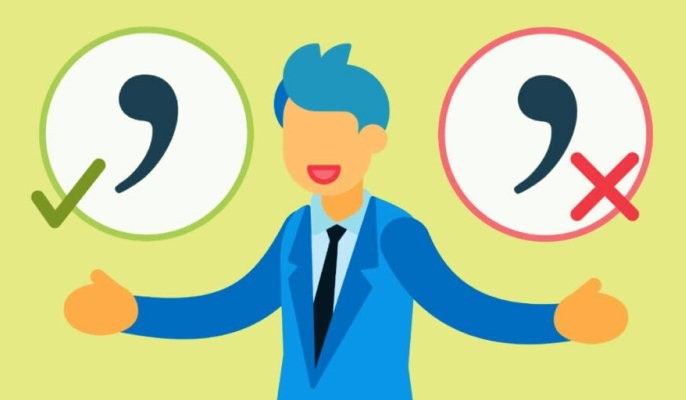
Besides the period, the comma is also a common and widely used type of punctuation. Comma is a punctuation mark in English that has many different uses.
In English, there are 5 ways to use commas:
- Used to list a list.
Example: I need 3 eggs, 2 bananas and a glass of milk. (I need 3 eggs, 2 bananas and 1 glass of milk)
- Used to separate two independent or linked clauses by conjunctions such as "but", "and", "so",...
Example: I am tired, so I will go to bed early. (I'm tired so I'll go to bed early)
- Used in direct speech, opening phrases.
Example: My mother said, “I should drink more water.” (My mother said, “I should drink more water.”)
- Used to separate dependent clauses and long prepositional phrases.
Example: According to the weather forecast, the tropical storm is coming. (According to the weather forecast, the storm is coming.)
- Used to separate nouns, noun phrases or non-defining relative clauses.
Example: Bill Gates, the richest man in the world, comes from Seattle. ((Bill Gates, the richest man in the world, is from Seattle.)
- Use commas to represent units of millions, thousands and hundreds
3. Question mark – Question mark – “?”
Similar to Vietnamese, the question mark is used to raise the speaker's question in order to receive an answer or confirmation from the other party. However, in some cases, especially in rhetorical questions, the question mark is still used even though no answer is expected.
How to use question marks: Question marks are used at the end of interrogative sentences.
Example:
- How long have you been here?
- What are you doing?
4. Exclamation mark – “!”
Like accents in English, exclamation marks also have their own rules of use. Exclamation marks are used at the end of a sentence to express surprise, joy or when the writer wants to emphasize a certain point. However, in writing, the exclamation point is often restricted in use.
There are 5 rules for using exclamation points properly as follows:
- Used to emphasize a sentence, give a certain command.
Example: Get out of my room!
- Used to express anger, surprise or negative emotions.
Example:
- Stop annoying here!
- Wow! You've got a new bike.
- Can combine question marks to express their feelings in informal and administrative documents.
Example: What happened? Stop making noise in class!
- You can put it in parentheses to emphasize certain words in a sentence.
Example: axcelavietnam.com is a website really(!) useful.
- Accompanied by the generated sound, exactly like imitation.
Example: Haizzz! I feel so tired.

5. Colon – Colon – “:”
In the English vocabulary about punctuation, the colon is used in the same way as in Vietnamese. This is a punctuation mark in English that is often used flexibly in both spoken and written.
The colon is used in the following cases:
- To start introducing a list
Example: What you need: a blindfold, an open space and 5 players or more.
- To start a direct conversation (similar to a comma)
Example: He announced to his friends: “I’m going to study abroad!”
- To introduce an explanation or provide information
Example:
- There was a problem with my car: it ran out of fuel.
- We should choose this one for the following reasons: good quality, catching-eye design, suitable price, best service.
- To separate time units
Example: The lesson will start at 07:00 a.m.
- Use between headings or headings to introduce smaller content.
Example: Punctuation: Semicolon
6. Semicolon – Semicolon – “;”
The function of the semicolon acts as a conjunction to connect the main clauses in a sentence
There are two ways to use this punctuation mark:
- Used to separate 2 independent clauses
Example: John loves studying; he can't get enough at school.
- Use to separate 2 groups of words containing commas.
Example: Worker robots can build our houses, buildings; doctor robots can help sick people; and space robots can build space stations on the Moon and other planets.
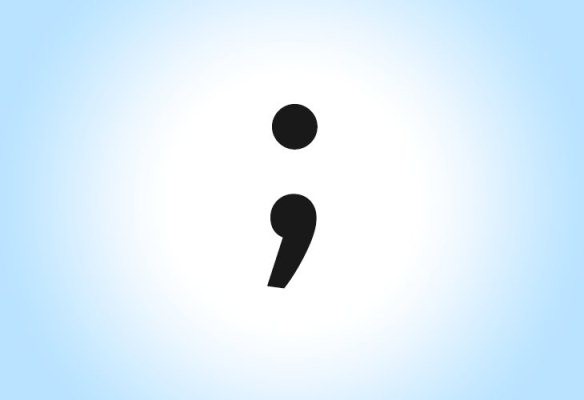
7. English name some other punctuation
Hyphen – Hyphen – “ -”
Use hyphens when prefixing some words.
Example: John is her ex-boyfriend.
Use hyphens when creating compound words from many smaller words.
Example: Will you live in a hi-tech house in the future?
Use hyphens when writing numbers in words.
Example: There are fifty-two students in my class.
Use a hyphen to split a jump word down two lines.
Example: No matter what he tried, he just couldn’t get the novel’s elec-trifying surprise ending out of his head.
Double quotation marks – (“ ”)
Use to directly quote a quote from a book, newspaper, or someone.
Example: She said: “Where can we find an Indian restaurant?”
Parentheses – Parentheses or round brackets – “( )”
Use parentheses for clarity.
Example: UNESCO (United Nations Educational Scientific and Cultural Educational) is one of the major professional organizations of the United Nations
Use parentheses to indicate thoughts after the action has occurred.
Example: You will need a flashlight for the camping trip (don't forget the batteries!).
Use parentheses for individual comments.
Example: Most TV programs are just for fun, not for study (I disagree)
Square brackets – “[ ]”
Use square brackets to provide an extra piece of information to the previous paragraph.
Example: [Nguyen Du] was recognized as “World Cultural Celebrity” by UNESCO.
Note when using punctuation in English
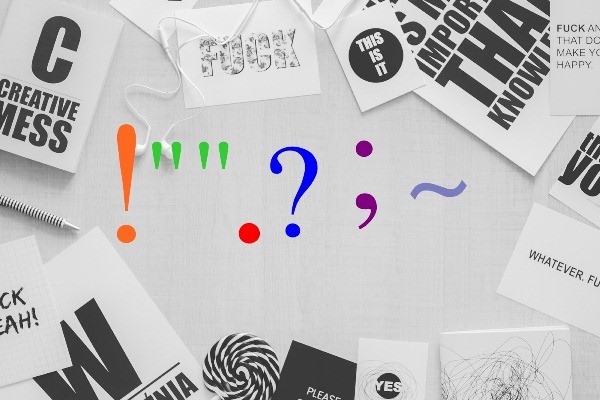
- In British English, there is usually no comma before the word "and", but in American English, the comma is used a lot before the word ", and"
- The position of the punctuation before or after the closing quotation mark is different.
- Semicolons and colons are always preceded by double quotes, “like so”;
- The position of the period and comma in quotes between US and British English is different. Always place periods and commas inside double quotes for US English, and vice versa place them outside of double quotes for British English.
- In formal writing, limit the use of question marks and exclamation points. Should use declarative sentences and special structures in the lesson
- Similar to question marks and exclamation points, dashes are not often used in formal and written styles. However, you can replace it with parentheses, or commas.
- Although dashes and parentheses have similar usage, parentheses represent a stronger "comment" than dashes.
- The use of question marks and exclamation points varies depending on the context. If the entire sentence is a question, and the quote is a word or phrase at the end of the sentence, the question mark will be outside the quotation mark. If the entire sentence is a statement and the quote is a question, the question mark will be enclosed in quotation marks.
Example: Do you like to watch “The Office”? He shouted, “Where do you think you’re going?”
- You can use short dashes instead of hyphens when creating compound nouns.
Example: Paris-New York route
Short dashes are also used between digits, as in a page number or year, to indicate a series of numbers.
Example: A discussion on personal finance is found on pages 45-62.
In writing should not write a sentence longer than 20 words. If you find that a sentence seems too long, find ways to add one or two punctuation marks or split it up into smaller sentences to make the sentence clearer and more concise, creating a sense of comfort, understanding, and distraction. for readers.
List of punctuation marks, and special marks in English
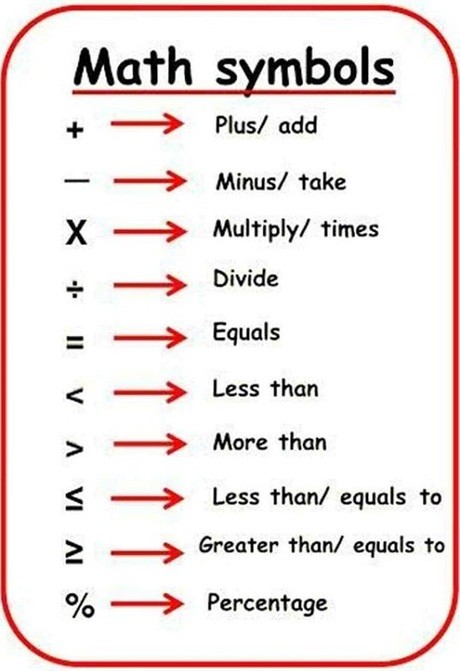
Common or special punctuation marks in English will be continuously added to the list below.
- The English comma is: comma – /ˈkɒmə/
- The English dot is: dot – /dɒt/ or full stop /ˌfʊl ˈstɒp/
- The English colon is: colon – /ˈkəʊlən/
- The English semicolon is: semi colon – /ˌsemiˈkəʊlən/
- The English exclamation mark is: exclamation mark – /ˌekskləˈmeɪʃn mɑːk/
- The English question mark is: question mark – /ˈkwestʃən mɑːk/
- The English dash is: hyphen – /ˈhaɪfn/
- The English single quotation mark is: single quotation mark – /ˈsɪŋɡl kwəʊˈteɪʃn mɑːks/
- Double quotation marks – /ˈdʌbl kwəʊˈteɪʃn mɑːks/
- Double quotation marks – /ˈdʌbl kwəʊˈteɪʃn mɑːks/
- English plus sign is: Plus/Add
- The English underscore is: Minus/Take
- The English multiplication sign is: Multiply
- The English division mark is: Divide
- The accent in English is: Equals
- English less than sign is: Less than
- Less than or equals sign in English is: Less than and Equals to
- Greater than or equals sign in English is: Greater than and Equals to
Above are some of the most frequently used punctuation marks in English. Mastering the above will help you know how to apply punctuation effectively and subtly.
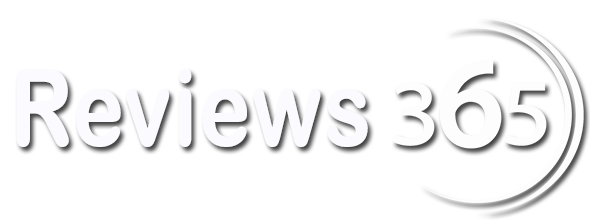
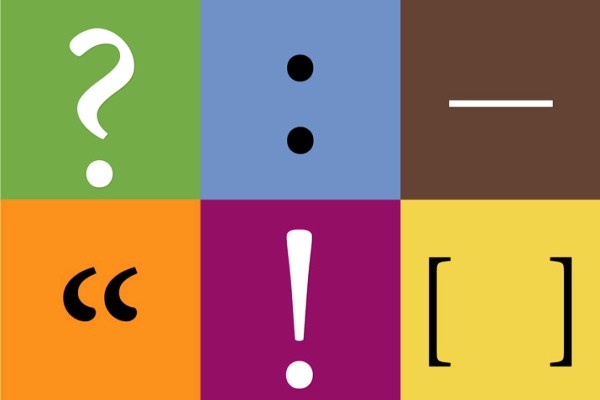






Để lại bình luận
5